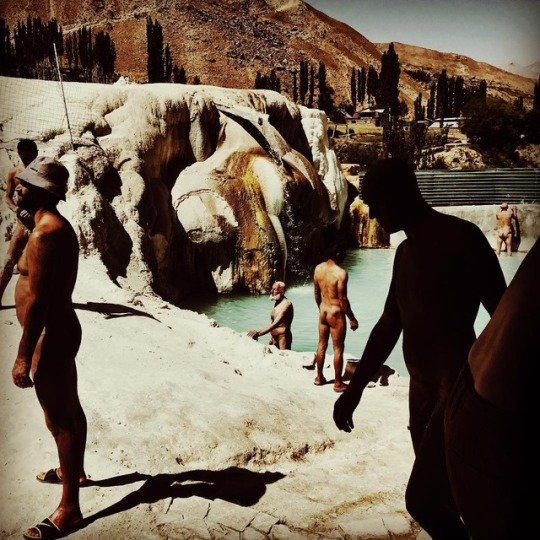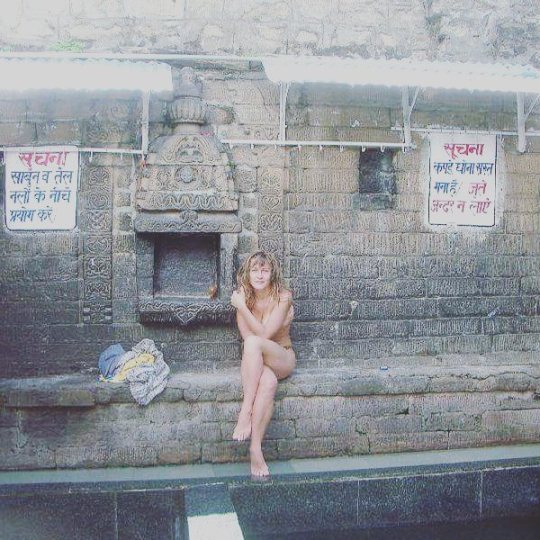Новые фотообои в ванной 🗻
A short update sprinkled with an assortment of photo's.
Above Kamchatka (Far-East Russia).
Then, I came across a couple of articles on spirituality and hot springs with the correct geographical spread.
'Hot springs are found in the mountainous regions and indeed appear to attract a mystical belief. Alex Lee explains on the website of Kazakh culture, Edgekz, a familiar tradition to readers of this blog:“Springs are sources of healing and spirituality in many cultures, and near Kazakhstan’s hot and cold springs, you can still see ribbons tied to trees, which locals have tied there when they make wishes on the magical waters.”
The laying of ribbons being a custom widespread across England and in Europe. One of the most famed of these hot springs is Rakhmanovsky Springs, a remote spring though to relieve pain, improve heart and circulatory problems and even slow aging and help regeneration. The reason for the later belief may derive from a local story linked to its discovery. This is named after a local hunter who discovered the spring following a wounded deer. Being ready to finish it off he watched amazed as the fatally wounded animal lay in the hot waters and was apparently healed, running away from the hunter unharmed. Understandably amazed by what he saw he did not shoot it but told the locals of what he saw.Other springs in the country are famed for hydrocarbonate and sulphate waters as well as silica, bromide, iodine and even Radon. The east of Kazakhstan boasts thermal hot springs with sulphate and hydrocarbonate waters. Additionally, Kazakhstan offers silicic water springs, as well as bromide and iodine waters. Bromide water calms one’s nerve system and also has anti-inflammatory effects, while iodine is considered helpful for gastrointestinal tract diseases with atherosclerosis and thyroid dysfunction.Perhaps the most established is the Alma Arasan hot spring established as a spa in 1886 for rheumatism, metabolic disease, blood problems with over 2000 patients seeking its waters a year. These waters have a temperature 35-7 C and said to be radioactive much like the Pyrenean Aix Les Bains. This might explain why it is claimed that those poisoned by heavy metals such as lead will get cured'.
From the Kazakh hot spring of Chundzhu. premiumsparesort_almaty:
#чунджа#горячиеисточники#чунджагорячиеисточники #chundzha#goryachieistochniki #premiumspa#premiumsparesort #премиумспаресорт#минеральнаявода #релакс #relaxing#relax #relaxtime #almaty #kanyon #travel#spa #lechebnye #otdyh #lechenie#mineralnayavoda
More holy springs, this time from Tibet. Tibettravel (Sep. 30):
'Lhasa is also attractive amongst a wide spectrum of tourists for its large storehouse of the various hot springs. The waters of these hot springs are indeed very magical for the fact they possess some supernatural quality of healing. Moreover the water of these hot springs are rich storehouses of sulphur, iodine, chlorine fluorine and all other such types of elements required for the cure of certain ailments in the body.The hot springs in Tibet find a mention as early as the onset of true Tibetan civilizations. Hot springs are regarded with great importance in several Buddhist scriptures also. These historical records show that hot springs in Tibet are not only the region of luxury but also necessity. They have a remarkable healing power for ailments like rheumatism, cardiovascular problems, skin problems and even pulmonary problems.In a recent research it has been found that Tibet is the home of about 1000 hot springs containing waters at variable temperatures. While some contain boiling waters, there are others where the water is luke warm'.
The article explores 4 hot springs nearby. It concludes with some tips:
Viewable• Do not enter the spring if you are drunk.• It is very natural that while you take your bath, the skin may turn reddish. Do not fret about that'.
Found on alanya-travels: a tour along Tajik hot springs along the Pamir valley.
What to expect:
Part of the story (eastward.nl, Aug. 20):Bath with a view
'The road got more and more amazing. Epic valley after epic valley kept turning up after every corner. When we saw a small pool on the side of the road we stopped to check it out. It was warm! So we decided to take a bath with an epic view.
Elsewhere in Tajikistan, Johan Smits reporting in Travel starts at 40 (Oct.) explains what a visit to a Tajik sanatorium entails:
'If someone asked you to sit naked on a bottomless chair and have radio-active water sprayed upwards onto your private parts, you might be forgiven for raising an eyebrow or two. Yet, that’s precisely what I willingly subjected myself to at Khoja Obi Garm, a Soviet-era sanatorium high up in the mountains of Tajikistan. What’s more, I might visit it again'.
No pictures of this, though the surroundings are astounding.
More on the (ex-) Soviet sanatorium culture can be found in this article on the calvert journal.
More on the (ex-) Soviet sanatorium culture can be found in this article on the calvert journal.
One of the stranger places that we’ve come across in the Wakhan valley. Garmchashma is a sulfur mineral hot spring with an average temp of 60 C. The apparent healing power of the sulphate draws locals with all sorts of skin conditions. #hotspring #sulphur #summer #centralasia #tajilkistan#гармчашма #skin #natureNotices
avlazarus being happy at Vashisht hot spring:
#hotspring #vashishthotspring #himalayas#india #himachalpradesh#happyhippie#manali #vashisht #вашишт #манали#гималаи#горячийисточник#горячииисточниквашиштSpiritual relevance:
'Nearby Manali, Vashisht is a small village known for the holy Vashisht temple and hot water spring. Having separate bathing provisions for men and women, Vashisht spring is known to have medicinal properties. The mythological importance of this site has made Vashisht one of the most well known hot water springs in India'.Fortunately not the most visited ...
I now seem to have run out of spirituality, so it's back to hedonism for the final picture, that of Kheerganga, Himachal Pradesh (India).






No comments:
Post a Comment